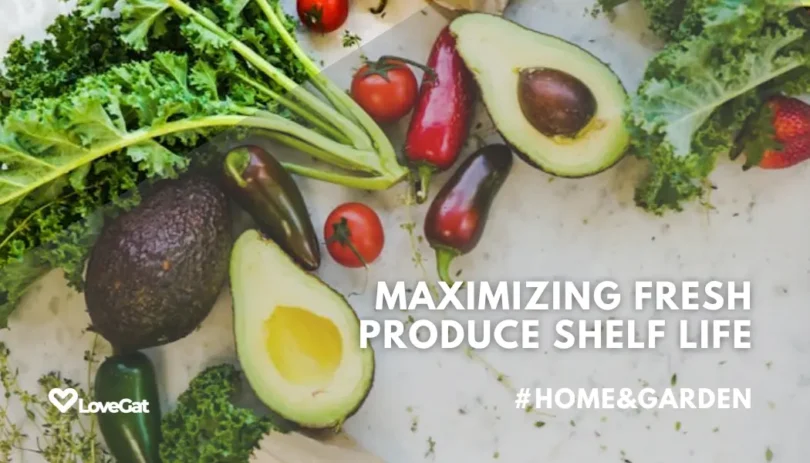Techniques for Maximizing the Shelf Life of Fresh Fruits and Vegetables!
Maximizing the shelf life of fresh fruits and vegetables is not just about keeping them from spoiling quickly; it’s also about preserving their flavor, texture, and nutritional value for as long as possible. With the right techniques for selection, storage, and handling, you can extend the life of your produce and minimize food waste. In this comprehensive guide, we’ll explore effective strategies for maximizing the shelf life of fresh fruits and vegetables, ensuring that you get the most out of your produce and your grocery budget.
1. Selecting the Freshest Produce
Choosing the freshest produce is the first step in prolonging its shelf life. Look for fruits and vegetables that are firm, vibrant in color, and free from bruises, blemishes, or signs of spoilage. Check for any soft spots or mold growth, which indicate deterioration. Opt for locally sourced produce when possible, as it’s likely to be fresher and have a longer shelf life than items that have traveled long distances.
2. Proper Storage Techniques
Proper storage is essential for maintaining the freshness of fruits and vegetables. Different types of produce require different storage conditions:
-
Refrigeration: Most fruits and vegetables benefit from refrigeration to slow down the ripening process and extend shelf life. Store fruits and vegetables in the crisper drawer of your refrigerator, which helps maintain humidity levels and prevents them from drying out.
-
Room Temperature: Certain fruits, like bananas, avocados, and tomatoes, should be kept at room temperature until they ripen, then refrigerated to extend their freshness. Store them away from direct sunlight and heat sources to avoid overripening.
3. Ethylene Management
Ethylene is a natural plant hormone produced by certain fruits and vegetables that can accelerate ripening and spoilage in sensitive produce. To prevent premature ripening, store ethylene-producing fruits, such as apples, bananas, and tomatoes, separately from ethylene-sensitive items like leafy greens, berries, and potatoes. Consider using ethylene-absorbing products or storage containers to help manage ethylene levels and extend the shelf life of fresh produce.
4. Proper Handling and Preparation
Handle fresh fruits and vegetables with care to avoid bruising or damage, which can lead to accelerated spoilage. Wash fruits and vegetables thoroughly under cold running water before consumption to remove dirt, bacteria, and pesticide residues. Avoid washing produce before storage, as excess moisture can promote mold growth and spoilage.
5. Storage Containers and Packaging
Choosing the right storage containers and packaging can also help prolong the shelf life of fresh produce. Use breathable containers or perforated plastic bags to allow airflow and prevent moisture buildup, which can lead to mold and rot. Avoid storing fruits and vegetables in airtight containers or plastic bags, as this can trap ethylene gas and accelerate ripening.
6. Regular Inspection and Rotation
To prevent spoilage and food waste, regularly inspect your stored fruits and vegetables for signs of deterioration, such as softening, mold growth, or off-odors. Discard any items that show signs of spoilage to prevent the spread of mold and bacteria to other produce. Additionally, practice first-in, first-out (FIFO) rotation when storing fresh produce, using older items before newer ones to ensure nothing goes to waste.
By implementing these techniques for maximizing the shelf life of fresh fruits and vegetables, you can enjoy the full flavor and nutritional benefits of these wholesome foods for longer periods while reducing food waste. From selecting the best-quality produce to storing them properly and handling them with care, every step plays a crucial role in extending the shelf life of fresh produce and preserving their freshness and quality. Incorporate these practices into your daily routine to make the most of your fruits and vegetables and minimize waste in your kitchen. With a little attention to detail and the right storage strategies, you can enjoy delicious, nutritious produce for days, weeks, or even months to come.
You Might Also Like
- How I used AI to create a living data visualization for our home
- 20 Cool Home Decor And Designs For Any Style
- Planning a garden? Here’s a step-by-step guide to start off on the right foot
Social Media Communities
Share your digital nomad experiences and connect with fellow Us:
- Instagram: @Lovegatofficial
- Facebook: @LoveGat
Your journey doesn’t end here. Continue to explore and share our Decor & Home Posts.







